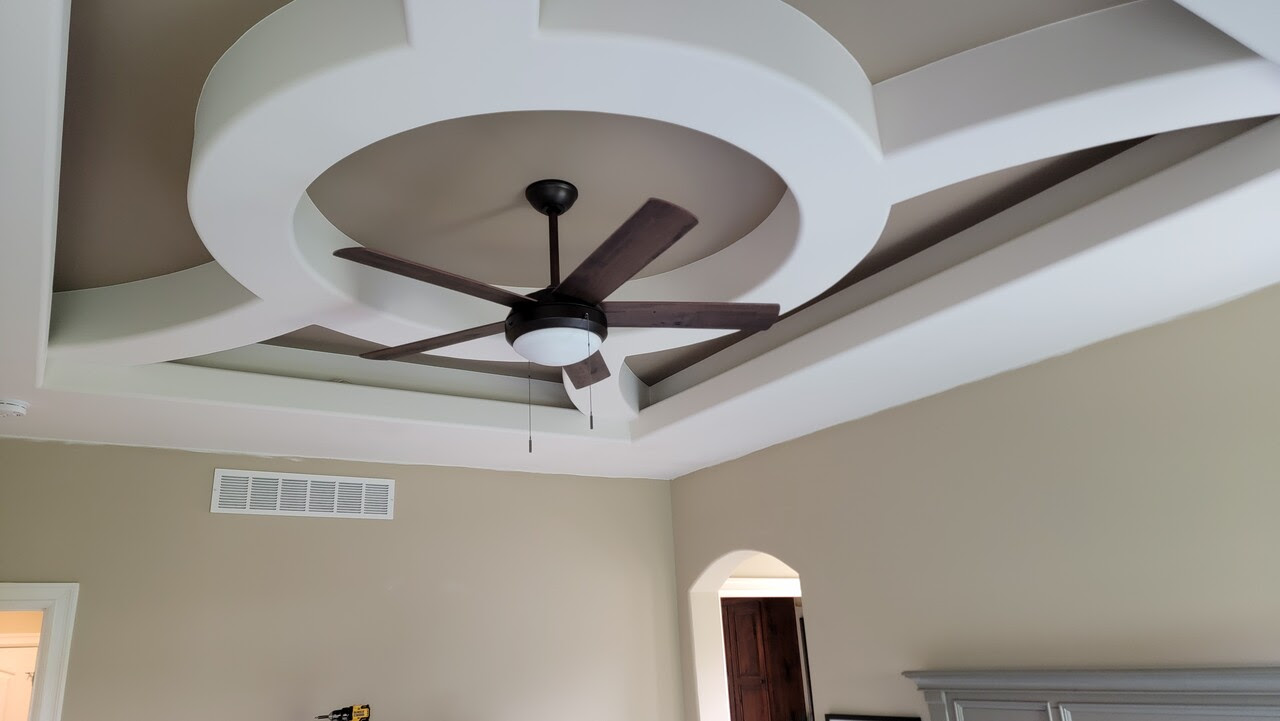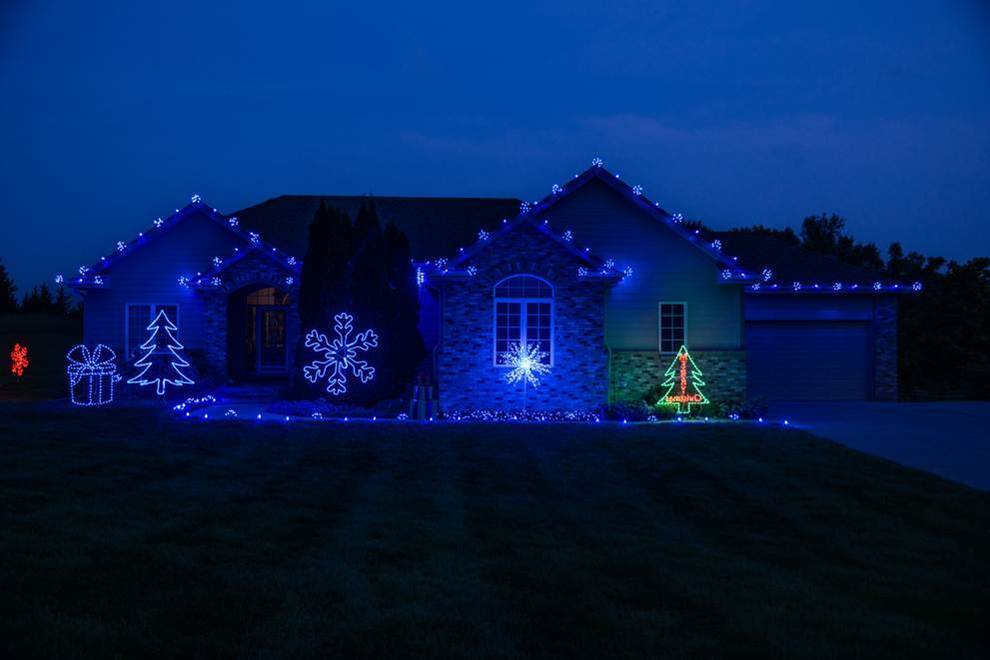
You may stumble on some low-priced painters while hiring a painter for your next Interior Painting project in Omaha. While this may be the best-case scenario for your budget, if you want durability and longevity, you may need to double-check the contractor's process and their products. Some painters may cut corners and take shortcuts that will cost you the project.
The problem with some of these so-called shortcuts is that they can sometimes be much worse than not taking the shortcuts at all -- and in some cases, they will make it necessary for you to start your painting project from scratch. This will ultimately make the project longer and more expensive.
Brush & Roll Painting is a professional Interior Painting company in Omaha. Our proven process, use of high-quality products, 9-year warranty, and experienced painters are just part of the value we provide to our customers.
In this article, we will discuss six common shortcuts some contractors take. By reading this article, you will be able to know what you are looking for when hiring a painter for your next Interior Painting project.
6 Costly Interior Painting Shortcuts
1. Not Taking The Time To Prepare
Before any painting project, preparing the space is essential.
Though you might not think it's much of a big deal and that painters can dive right into the painting, preparing the space has proven to provide no messes, crisp lines, and long-lasting paint.
The prep work for Interior Painting includes taping off trims, edges, and corners, sanding, repairing, and priming key areas.
It bears making sure that you know the dimensions of your interior that will be painted, as you can get the appropriate amount of paint then and get the protective materials you will need to keep your home clean while you are painting.
 2. Not Putting Up Protective Materials
2. Not Putting Up Protective Materials
Protective materials such as paper, plastic, or drop cloths are an important part of the painting process, as they help ensure that your home is kept clean as you paint. These should be laid over furniture and across floors for wall and ceiling painting. Walls should be covered in plastic if you are having your ceiling painted.
Additionally, tape should be used along all the edges to ensure clean, crisp lines.
Protective materials will catch any paint drips or spills that would otherwise damage parts of your home. Protective materials allow painters to leave your home spotless.
3. Not Sanding Before Painting
Sanding is an important part of the painting process and is one that you should never skip. This crucial step involves using sandpaper, sand block, or pole sander to create a smooth, even surface on the material you plan to paint. By doing so, you remove any imperfections, such as bumps, old paint, or rough patches, that could interfere with the new paint's adhesion.
Sanding the surface of what is to be painted prepares it by making it smoother, allowing the paint to go on better and stay on longer -- adhesive qualities are improved through sanding. This means that the paint will bond more effectively to the surface, reducing the likelihood of peeling or chipping over time.
Additionally, a well-sanded surface ensures that the final finish is even and professional-looking, enhancing the overall aesthetic appeal of your project. Skipping this step can result in a subpar paint job that may require more frequent touch-ups and maintenance, ultimately costing you more time and money in the long run.
4. Only Using One Coat Of Paint
You could look at something you only applied one coat of paint to and think it looks good right after painting, but give it time. As the days and weeks pass, you will start to notice imperfections and inconsistencies in the coverage. The underlying surface may begin to show through, and the paint may appear uneven or patchy. It will inevitably be the case that you will realize that it would have looked better with a second coat of paint. A second coat not only enhances the visual appeal by providing a more uniform and vibrant finish but also offers an extra layer of protection. This additional layer of paint helps to seal the surface more effectively, making it more resistant to wear and tear, moisture, and other environmental factors. Plus, a second coat of paint provides an extra layer of durability that will help retain color, ensuring that your walls look fresh and vibrant for a longer period. This means fewer touch-ups and less maintenance in the future, ultimately saving you time and effort.
You could look at something you only applied one coat of paint to and think it looks good right after painting, but give it time. As the days and weeks pass, you will start to notice imperfections and inconsistencies in the coverage. The underlying surface may begin to show through, and the paint may appear uneven or patchy. It will inevitably be the case that you will realize that it would have looked better with a second coat of paint.
A second coat not only enhances the visual appeal by providing a more uniform and vibrant finish but also offers an extra layer of protection. This additional layer of paint helps to seal the surface more effectively, making it more resistant to wear and tear, moisture, and other environmental factors.
Plus, a second coat of paint provides an extra layer of durability that will help retain color, ensuring that your walls look fresh and vibrant for a longer period. This means fewer touch-ups and less maintenance in the future, ultimately saving you time and effort.
5. Not Properly Mixing The Paint
If you are using a gallon of older paint, it's important that you properly mix it before applying it to any surface. This step is crucial because paint consists of various components, including pigments, binders, and solvents, which can separate over time when the paint is left sitting.
If you skip this essential step, you risk ending up with an uneven paint job that lacks consistency in color and texture. Properly mixed paint ensures that the pigments are evenly distributed, providing a uniform appearance and better adhesion to the surface. This not only enhances the aesthetic appeal of your project but also contributes to the longevity and durability of the paint job.
.png?width=614&height=321&name=Blog%20Post%20Image%20Size%20(14).png)
It's imperative that you properly mix the paint that you use before applying it to any surface. This step is crucial because paint consists of various components, including pigments, binders, and solvents, which can separate over time when the paint is left sitting. If you skip this essential step, you risk ending up with an uneven paint job that lacks consistency in color and texture. Properly mixed paint ensures that the pigments are evenly distributed, providing a uniform appearance and better adhesion to the surface. This not only enhances the aesthetic appeal of your project but also contributes to the longevity and durability of the paint job. Therefore, taking the time to thoroughly mix your paint can make a significant difference in the overall quality and finish of your interior painting project.6. Using Low-Quality Paint
Low-priced paint is clearly the better choice for anyone's wallet. After a few coats, this paint may look decent, but over time, you will find it difficult to clean, touch up, and chip off easily.
Most low-priced painters use cheaper paint because they know it can finish job. Typically, these painters don't provide a warranty because they know the product won't hold up for a longer period of time and doesn't touch up well.
High-quality, more expensive paint is made with stronger ingredients to retain color and durability, and it has stain-release technology to make cleaning easy.
Interior Painting Your Home
Sometimes, taking these shortcuts may be what you are looking for if you want a quick, inexpensive job. But if you are looking for a durable and lasting interior paint job, these shortcuts will be noticeable quickly.
If you need a professional to help with your interior painting in Omaha, NE, our team at Brush & Roll Painting can help. With an extensive prep work process and the use of high-quality products, our work promises durable, lasting results every time.
Click the button below to get a quote for your project in Omaha, NE.
Next, check out our Guide to Interior Painting to ensure everything is checked off before your project begins.
Bill is the owner and operator of Brush & Roll Painting. Bill Carlson is a second-generation painter. He grew up working with his father’s painting and restoration company. After graduating from Bennington High School, he served in the US Navy, traveling with the boxing team. While this was a great opportunity to see the world, it also made him realize how much he loved his little world here in Nebraska. He settled back into the painting industry, working with his brother. It wasn’t long before Bill’s entrepreneurial spirit pushed him to start his own business. Always one for a challenge, he longed to prove to himself that he could be as successful on his own as both his dad and brother were.


















-Jul-23-2025-02-21-33-5468-PM.png?width=800&height=418&name=Blog%20Post%20Image%20Size%20(2)-Jul-23-2025-02-21-33-5468-PM.png)




-Oct-22-2025-01-39-19-5208-PM.png?width=800&height=418&name=Blog%20Post%20Image%20Size%20(1)-Oct-22-2025-01-39-19-5208-PM.png)


